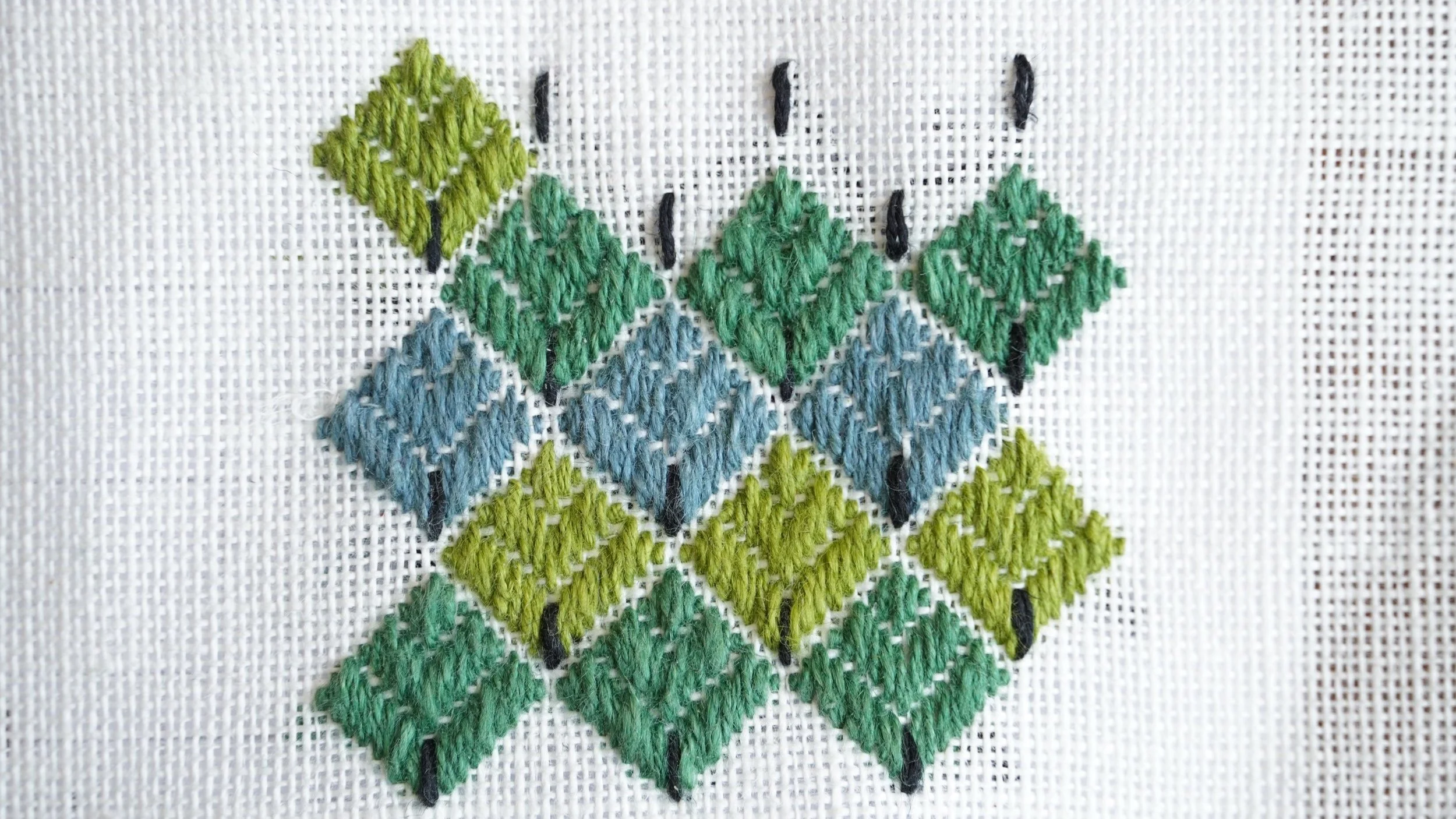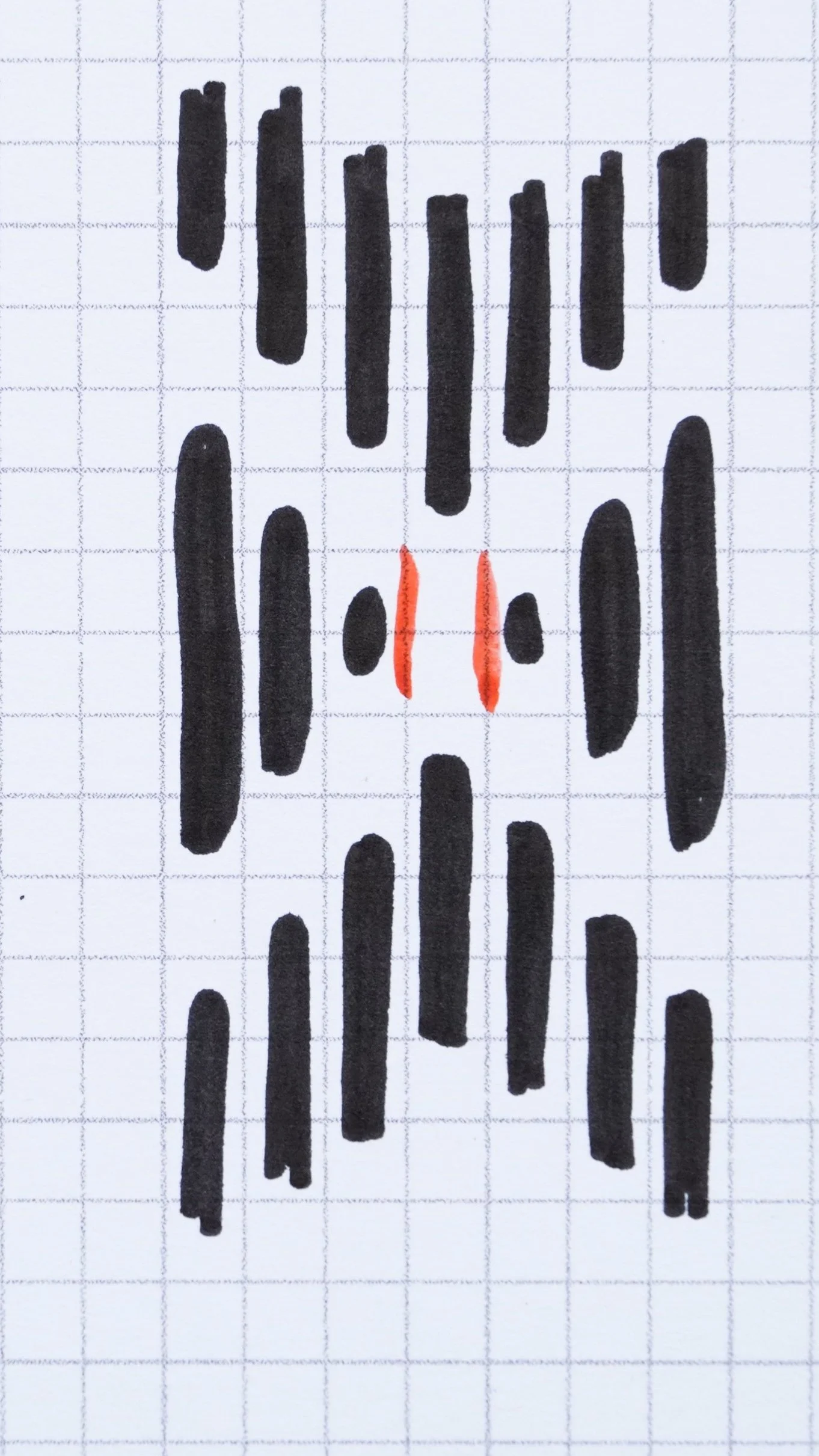Spring leaf embroidery pattern
I recently made an embroidery inspired by the sashiko variation “koginzashi”, a traditional Japanese technique of embroidery that covers the surface of the bottom fabric almost entirely. In its original form koginzashi is sewn on a blue fabric with white thread, but in this loosely inspired version I have sewn with colored linen yarn on a white fabric. I thought I might share the pattern with you in case you want to try it yourself!
In this schematic every line of the grid paper is equivalent to a thread in the bottom fabric. The pattern consists of rows of vertical stitched that form little squares, placed next to each other. In every square I have made one stitch with a contrasting black thread to form the stem of a leaf.
There are a couple of things you need to pay attention to in sewing this pattern. First, no two threads are ever stitched into the same hole in the bottom fabric: There is always at least one “bottom fabric thread“ (Henceforth called “BT“) between every embroidery stitch, and between the individual squares there are more of the bottom threads showing.
Secondly, the longest leap/ float you sew goes over 5 BT, never more. In fact, most of the leaps go over 5, as seen in the right image above: Only a few stitches go over 3 BT (green) and 1 BT (red). I sew from left to right and in my head I hear; 1, 3, 5, 1 and 5, 5 and 5 and so on.
Another thing you’ll need to be aware of is where to place the next square once you have finished your first one. Here I have drawn the intersection of four squares, and marked out the fact that there are 3 BT between the squares vertically…
But between the horizontal squares there are only two BT showing!
If you want to space out the leaves more you can leave five threads vertically and four horizontally, or as many as you like as long as you keep the horizontal number even and the vertical uneven. I think. That should just give you wider spaced leaves… But in truth I haven’t tried it, so please let me know if you do!
For my embroidery I have used the linen yarns I sell in my webshop in colors Black, Smudged teal, Fir tree and Spring birch. I used the thread double to get good coverage and I used a linen fabric I’ve bought second hand for the bottom fabric. It has about 11 threads in the warp and 10 threads in the weft if you want to look for a similar one, but honestly this pattern can be applied in many ways and on many materials: It can also be adapted for pick-up band weaving and perhaps even knitting!





